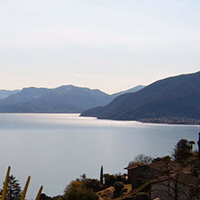Automated high frequency monitoring of Lake Maggiore through in situ sensors: system design, field test and data quality control

Submitted: 3 March 2021
Accepted: 19 April 2021
Published: 21 June 2021
Accepted: 19 April 2021
Abstract Views: 1289
PDF: 427
HTML: 25
HTML: 25
Publisher's note
All claims expressed in this article are solely those of the authors and do not necessarily represent those of their affiliated organizations, or those of the publisher, the editors and the reviewers. Any product that may be evaluated in this article or claim that may be made by its manufacturer is not guaranteed or endorsed by the publisher.
All claims expressed in this article are solely those of the authors and do not necessarily represent those of their affiliated organizations, or those of the publisher, the editors and the reviewers. Any product that may be evaluated in this article or claim that may be made by its manufacturer is not guaranteed or endorsed by the publisher.
Similar Articles
- Paul O'Callaghan, Mary Kelly-Quinn, Distribution and structure of lotic macroinvertebrate communities and the influence of environmental factors in a tropical cloud forest, Cusuco National Park, Honduras , Journal of Limnology: Vol. 76 No. 1 (2017)
- Christine M. Greenaway, Andrew M. Paterson, Wendel (Bill) Keller, John P. Smol, Scaled-chrysophyte assemblage changes in the sediment records of lakes recovering from marked acidification and metal contamination near Wawa, Ontario, Canada , Journal of Limnology: Vol. 71 No. 2 (2012)
- Adrianna Wojtal-Frankiewicz, Joanna Bernasińska, Tomasz Jurczak, Krzysztof Gwoździński, Piotr Frankiewicz, Marzena Wielanek, Microcystin assimilation and detoxification by Daphnia spp. in two ecosystems of different cyanotoxin concentrations , Journal of Limnology: Vol. 72 No. 1 (2013)
- Fernando W. Bernal-Brooks, José J. Sánchez Chávez, Luis Bravo Inclán, Rubén Hernández Morales, Ana K. Martínez Cano, Owen T. Lind, Laura Dávalos-Lind, The algal growth-limiting nutrient of lakes located at Mexico’s Mesa Central , Journal of Limnology: Vol. 75 No. s1 (2016): Proceedings of the 6th National Congress of Limnology
- Aldo Marchetto, Simona Musazzi, A procedure to update quality indices based on species abundances: an example using the EPI-L diatom index , Journal of Limnology: Vol. 82 (2023)
- Bernadett Boóz, Arnold Móra, Márk Ficsór, Petr Pařil, Raúl Acosta, Bea Bartalovics, Thibault Datry, José Maria Fernández-Calero, Maxence Forcellini, Marko Miliša, Heikki Mykrä, Bálint Pernecker, Vendula Polášková, Luka Polović, Henna Snåre, Zoltán Csabai, Neglected dipterans in stream studies , Journal of Limnology: Vol. 83 (2024)
- Erica E. Scheibler, M. Cristina Claps, Sergio A. Roig-Juñent, Temporal and altitudinal variations in benthic macroinvertebrate assemblages in an Andean river basin of Argentina , Journal of Limnology: Vol. 73 No. 1 (2014)
- Walter Ambrosetti, Luigi Barbanti, Angelo Rolla, Leonardo Castellano, Nicoletta Sala, Hydraulic paths and estimation of the real residence time of the water in Lago Maggiore (N. Italy): application of massless markers transported in 3D motion fields , Journal of Limnology: Vol. 71 No. 1 (2012)
- Sonja Rigterink, Paula Echeverría-Galindo, Rodrigo Martínez-Abarca, Julieta Massaferro, Philipp Hoelzmann, Bernd Wünnemann, Andreas Laug, Liseth Pérez, Wengang Kang, Nicole Börner, Anja Schwarz, Ping Peng, Junbo Wang, Liping Zhu, Antje Schwalb, Sub-fossil chironomids as indicators of hydrological changes in the shallow and high-altitude lake Shen Co, Tibetan Plateau, over the past two centuries , Journal of Limnology: Vol. 81 (2022)
- Livia Lucentini, Lilia Gigliarelli, Maria Elena Puletti, Antonella Palomba, Aurora Caldelli, Diego Fontaneto, Fausto Panara, Spatially explicit genetic structure in the freshwater sponge Ephydatia fluviatilis (Linnaeus, 1759) within the framework of the monopolisation hypothesis , Journal of Limnology: Vol. 72 No. 1 (2013)
<< < 14 15 16 17 18 19 20 21 22 23 > >>
You may also start an advanced similarity search for this article.

 https://doi.org/10.4081/jlimnol.2021.2011
https://doi.org/10.4081/jlimnol.2021.2011






